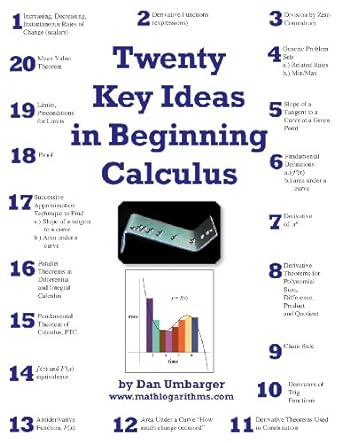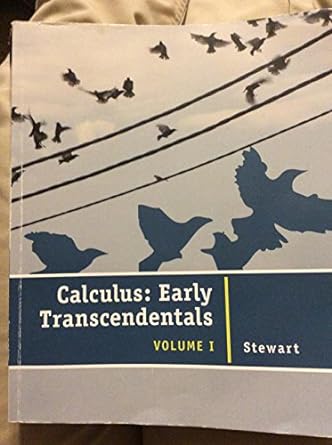Go back


Twenty Key Ideas In Beginning Calculus(1st Edition)
Authors:
Dan Umbarger ,University Lecturers Department Of Human Anatomy John Morris ,Al Diaz

Cover Type:Hardcover
Condition:Used
In Stock
Include with your book
Free shipping: April 13, 2024Popular items with books
Access to 3 Million+ solutions
Free ✝
Ask 10 Questions from expert
200,000+ Expert answers
✝ 7 days-trial
Total Price:
$0
List Price: $15.95
Savings: $15.95(100%)
Book details
ISBN: 0983397309, 978-0983397304
Book publisher: Math Logarithms
Get your hands on the best-selling book Twenty Key Ideas In Beginning Calculus 1st Edition for free. Feed your curiosity and let your imagination soar with the best stories coming out to you without hefty price tags. Browse SolutionInn to discover a treasure trove of fiction and non-fiction books where every page leads the reader to an undiscovered world. Start your literary adventure right away and also enjoy free shipping of these complimentary books to your door.
Twenty Key Ideas In Beginning Calculus 1st Edition Summary: Twenty Key Ideas in Beginning Calculus is a b & w 174 page book written by a high school mathematics teacher who learned how to sequence and present ideas over a 30-year career of teaching grade school mathematics. It is intended to serve as a bridge for beginning calculus students to study independently in preparation for a traditional calculus curriculum or as supplemental material for students who are currently in a calculus class. It is highly visual with 40 supportive images, 100+ cartoons and other illustrations, 110 graphs, and 40+ data tables spread throughout its 174 pages. Comprehension and understanding of ideas is emphasized over symbol manipulation although the latter is covered. The main text, Chapters 1-14, teaches "intuitive calculus," while the appendices contain "traditional calculus" proofs allowing the reader to customize their learning experience according to their ability and interest for rigor. When appropriate, the reader is referred to correlative interactive applets that can be used to supplement the text.
Customers also bought these books
Frequently Bought Together
Top Reviews for Books
Mandee gondeiro
( 4 )
"Delivery was considerably fast, and the book I received was in a good condition."










